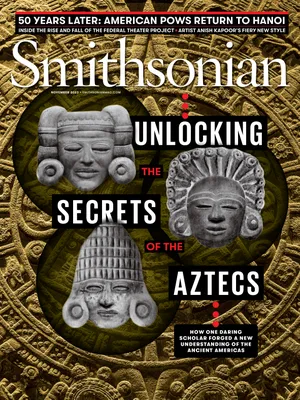Can Every Living Thing Be Traced to a Single Cell? And More Questions From Our Readers
You’ve got questions. We’ve got experts
:focal(446x335:447x336)/https://tf-cmsv2-smithsonianmag-media.s3.amazonaws.com/filer_public/9f/5e/9f5e4a1e-8730-4c7a-98b5-e1622684253a/ask.jpg)
Can every living thing be traced to a single cell? Benjamin Schwartz | Oak Park, Michigan
Scientists agree on the basics of how life began, perhaps four billion years ago. Inorganic materials in the depths of the sea—subjected to favorable chemical conditions—most likely came to form a primitive slime, over a long period of time. That slime eventually gave rise to bacteria, or perhaps blue-green algae. No one knows whether these early life-forms developed in several different regions or in one part of the ocean—or from a single cell, as you suggest. When it comes to that level of precision, we may never arrive at a universally acceptable answer. —Dave Pawson, researcher of invertebrate zoology, National Museum of Natural History
Why is Saturn’s moon Titan the only moon in the solar system with a significant atmosphere? Kurt Petersen | Sheboygan Falls, Wisconsin
Titan’s atmosphere is about 95 percent nitrogen and 5 percent methane. The methane holds the atmosphere together, allowing seasons and weather patterns to form. One reason methane stays in the atmosphere is that Titan is the perfect distance from the sun to have a temperature and pressure where solid, liquid and vapor forms of methane can coexist. Scientists call this the “triple point.” (Earth is at the triple point for H2O.) Other moons also have atmospheres, though they’re much thinner. On our own moon, each cubic centimeter of atmosphere contains just one molecule for every ten trillion found in Earth’s. —Mike Alexandersen and Rosemary Pike, researchers, Center for Astrophysics | Harvard & Smithsonian
Which battle played a more crucial role in the Civil War, Vicksburg or Gettysburg? John Jay Rouse | St. Cloud, Minnesota
The Siege of Vicksburg, which raged from May 18 to July 4, 1863, had a more significant outcome than the Battle of Gettysburg, which lasted from July 1 to July 3 of that year. At Vicksburg, Major General Ulysses S. Grant forced the surrender of the citadel—the last major Confederate stronghold on the Mississippi River—isolating Confederate resources in Arkansas, Texas and parts of Louisiana while providing the U.S. Army control of the Mississippi River. Grant also forced the complete surrender of about 30,000 Confederate soldiers in the Department of Mississippi and East Louisiana. In contrast, Gettysburg cost the Confederates political support and inflicted heavy casualties, but it did not destroy the Army of Northern Virginia. It did boost the Army of the Potomac’s morale at a critical point and give President Abraham Lincoln an occasion to redefine the war’s purpose. —Frank Blazich, curator of military history, National Museum of American History
We recently observed birds flying near our cruise ship when there was no land in sight. Where do they go at night? David Leveton | Gainesville, Virginia
Birds can live semi-permanently at sea. Cruise ships can serve as resting places for migratory songbirds or shorebirds, but those birds would likely only be noticed if they landed on a ship. Passengers on cruise ships might also spot seabirds such as petrels and shearwaters, which can spend weeks soaring on wind currents, catching naps as they fly. Albatrosses can stay at sea for years, sleeping as they float on the ocean. Some seabirds only come to land to breed. They are well adapted for life on the wing. —Jim Whatton, researcher of birds, National Museum of Natural History
